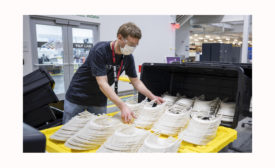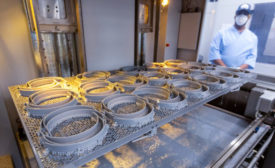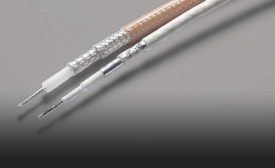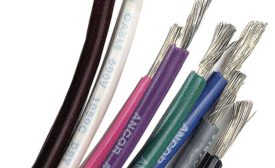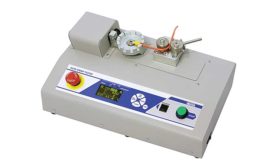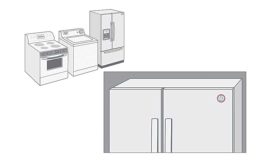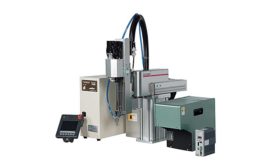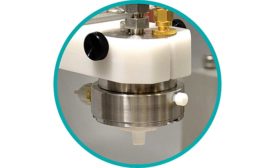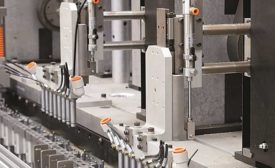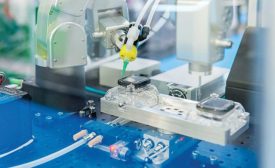Featured on Home Page
Cutting and Stripping Coax
The latest technology for stripping coaxial cable gives engineers unprecedented control
April 13, 2020
Options for Tinning Wire
Whether applied manually or by a machine, the tinning process improves the mechanical strength of bare copper wire
April 10, 2020
Appliance Makers Keep It Together With PSAs
Pressure-sensitive adhesives are helping appliance assemblers enhance aesthetics, performance and reliability
April 8, 2020
Threaded Fasteners for Plastics Assembly
Here are some tips, tricks and suggestions for using threaded fasteners to assemble plastic parts
April 7, 2020
New Process Welds Clear Plastic Parts
Clear polymer materials can be successfully bonded with a new process that combines simultaneous through-transmission infrared laser welding with precision ultrasonic spray deposition technology
April 6, 2020
Alternatives to Pallet-Transfer Conveyors
Need to linearly index parts and subassemblies with accuracy and repeatability? Consider precision-link conveyors and walking beams
April 3, 2020
Small Robots Play a Big Role in Automation
Compact tabletop machines are becoming more popular with manufacturers
April 2, 2020
Never miss the latest news and trends driving the manufacturing industry
Stay in the know on the latest assembly trends.
JOIN TODAY!Copyright ©2024. All Rights Reserved BNP Media.
Design, CMS, Hosting & Web Development :: ePublishing
